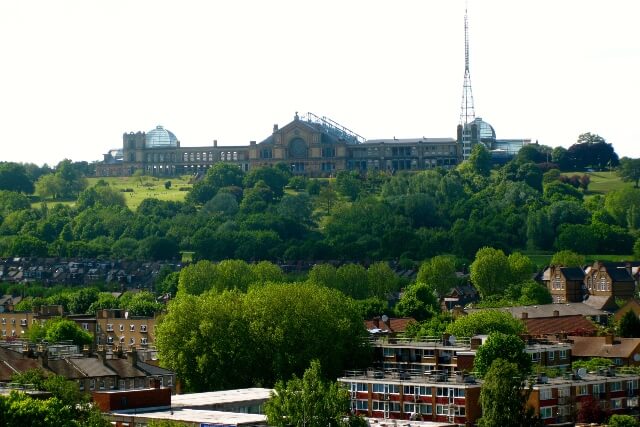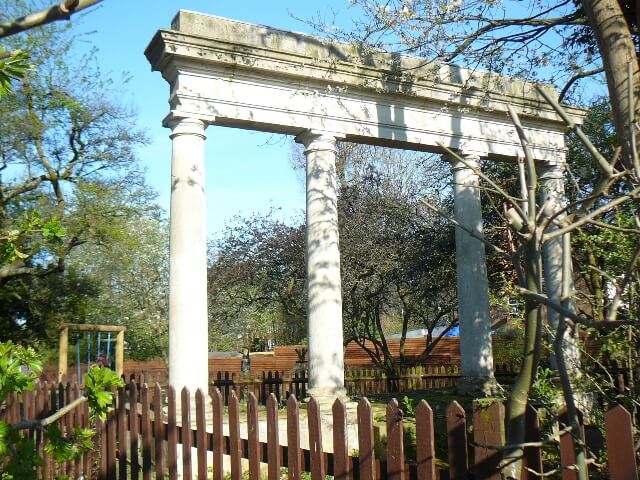Alexandra Palace and its Park dominate the skyline for miles around in North London. What was on the site previously?

The land on which the Palace and Park are located was once ancient Tottenham Wood, the western part of the holdings of the Manor of Tottenham from earliest times. In 1619 Tottenham Wood comprised 388 acres with 4,660 trees and was valued at £776.13s. 4d.
Tottenham Wood
Deforestation of the Great Forest of Middlesex began in 1218 but Tottenham Wood, in common with Enfield Chase, survived for several more centuries becoming the last refuge of wild animals such as boars, stags and wild bulls. It was the hunting of these animals that attracted the interest of King James 1who enclosed the wood for his private hunting in the 17th century. On a visit in 1623 the king was moved to complain to the lord of the manor about the state of the fences and gates to the wood. It has also been suggested that King Henry VIII may have also hunted there during his visits to Tottenham.
Tottenham Wood became the subject of two proverbs: “you shall as easily remove Tottenham Wood,” relating to things unachievable and, “when Tottenham Wood is all on fire then Tottenham Street is nought but mire,” implying that when rain is falling on the wood Tottenham village will suffer from overflowing streams.
Tottenham Wood was also the location of St. Dunstan’s Well celebrated for its curative properties. (See ‘Medieval Pilgrims, Badges and Holy Well’, Keith Fawkes, HHS Bulletin 59, 2018)
Tottenham Wood Farm
In 1789, Tottenham Wood, then comprising 367 acres of cultivated and meadow lands, was put up for auction by the lord of Tottenham Manor, the Earl of Coleraine, along with Bruce Castle and his other properties. It was purchased by Michael Mitchell, a City tobacconist for £11,410. He built a new farmhouse in the early 19th century alongside today’s Rhodes Avenue and introduced other improvements.
In 1812, Tottenham Wood Farm was purchased by Thomas Rhodes who hailed from an established Yorkshire farming family who held other farmland in the north London area. He was a great uncle of Cecil Rhodes (1853-1902), known for his exploits in Africa. He hoped to create a dairy farm and purchased additional land in 1850. His property now extended from the Great Northern Railway in the east as far as Muswell Hill village and south to the Priory estate on the western edge of Hornsey village. The farm now encompassed 450 acres.

Thomas Rhodes died in 1856 aged 93 and his family inherited the farm. In 1894 the farmhouse became the clubhouse for Muswell Hill Golf Club. It remained so until 1932 when it was demolished except for its portico which remained in its original location. The portico, described as “a screen” was Grade II listed in 1974. It stands in splendid isolation in the grounds of Rhodes Avenue Primary School where it can be viewed from the road.

In the early 1850s the architect Owen Jones (1809-76) began discussions with the Rhodes family about the acquisition of their property to create a ‘Palace of the People’ but that’s another story …
Image credits
Alexandra Palace 2013 by Liz Ixer
Portico of Tottenham Wood Farm 2018 courtesy of Janet Owen; all other images copyright HHS.